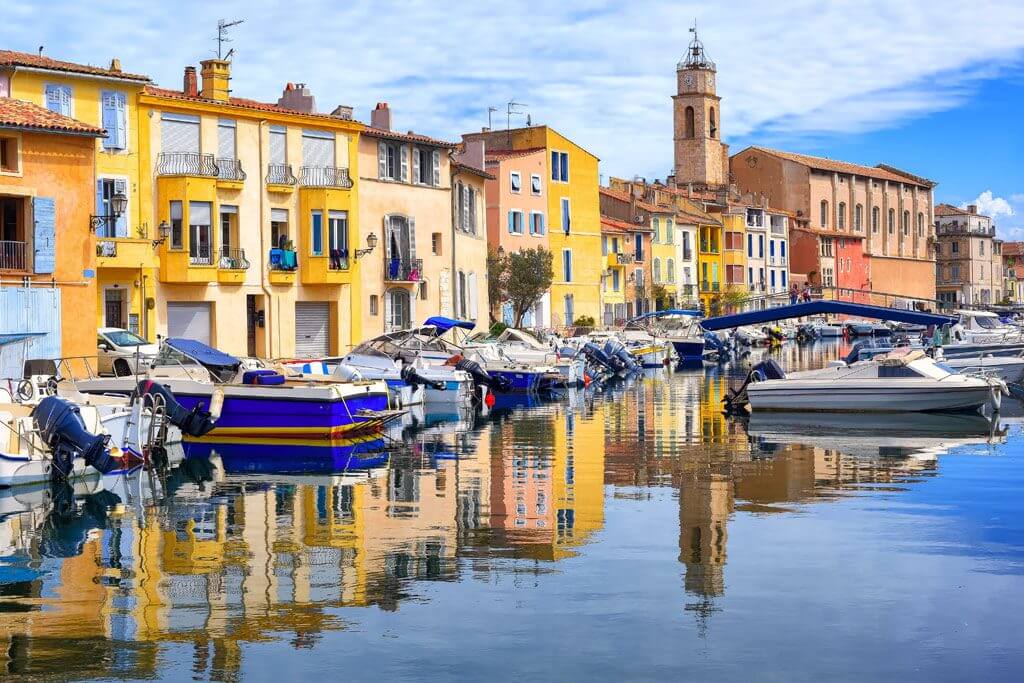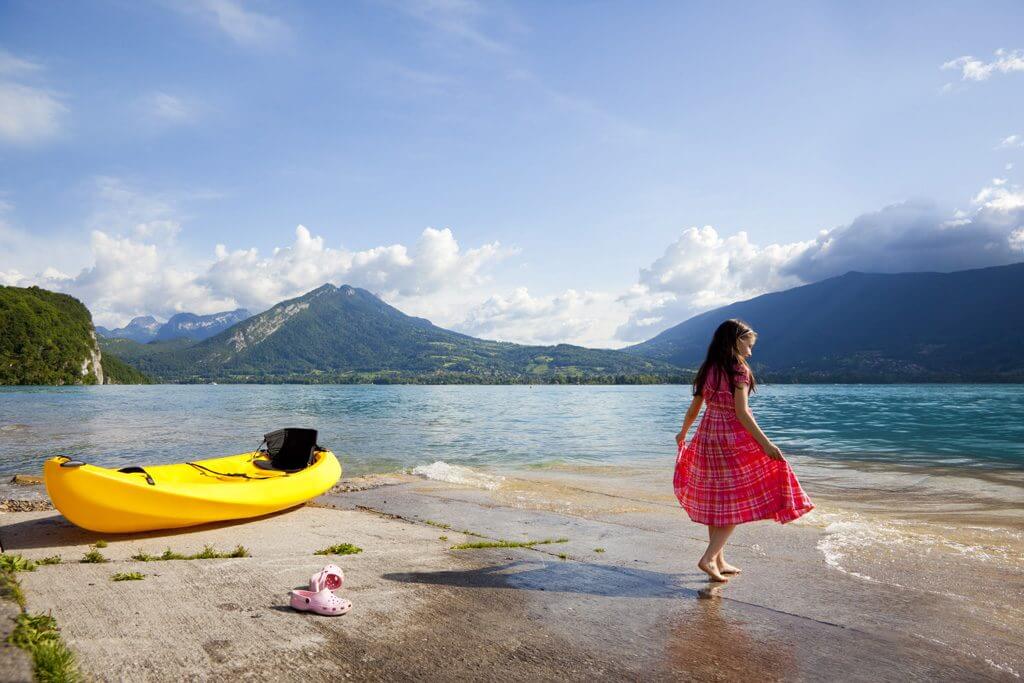Article written by Elisa - Travel Writer & Local in France
This article may contain compensated links. Please read disclaimer for more info.
Visit Bourgogne-Franche-Comté
Bourgogne-Franche-Comté is a new region in France, created in 2016 from a merger of the historical regions of Bourgogne and Franche-Comté. As such, it is not easy to describe Bourgogne-Franche-Comté as a unique territory when the former historical regions are so different!
What is Bourgogne-Franche-Comté famous for?
The Bourgogne region (Burgundy) has long been known as a place of artistic and historical interest, famous for its Romanesque heritage and exceptional wines.
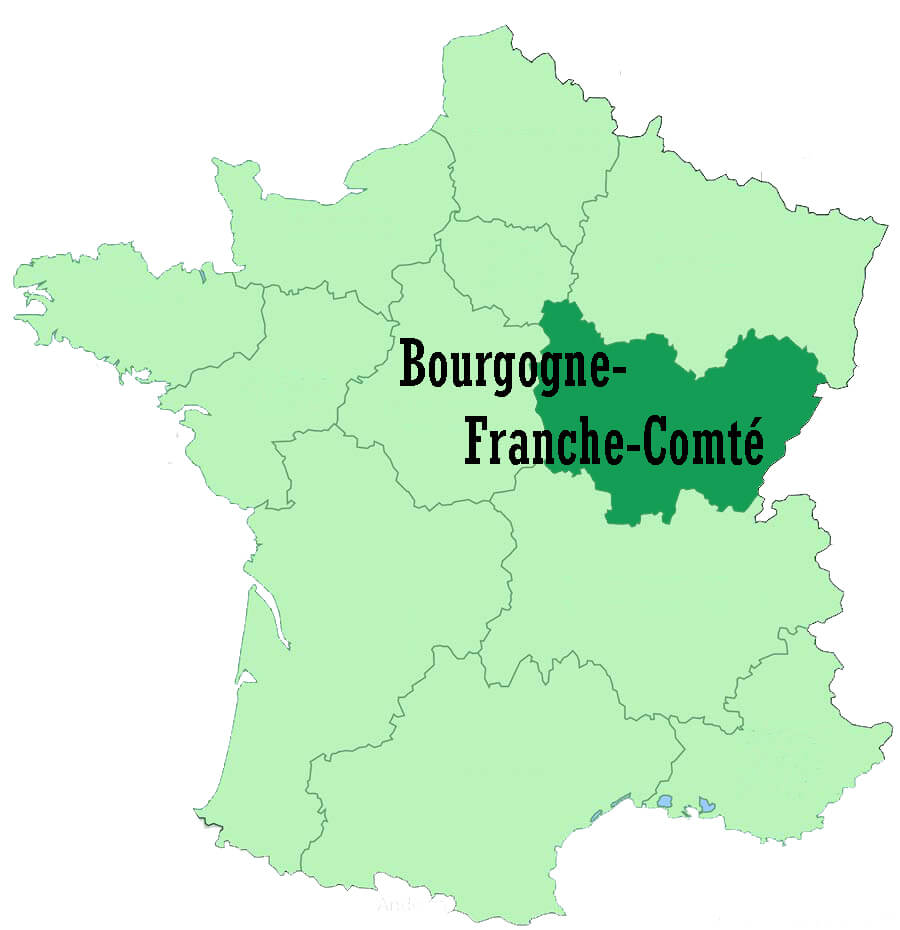
Franche-Comté is nature at its best. The region boasts diverse landscapes and large open spaces thanks to the wealth of the Vosges Massif, the Jura Mountains, and its many lakes and forests.
Take the time to discover the main historical and architectural heritage of Bourgogne-Franche-Comté and the wealth of activities that the region has to offer, from wine trails to inland waterway trips, cycling holidays, etc. gastronomic trips, incredible hikes, and alpine skiing.
Whether on holiday or just passing through, be sure to check out the local specialties such as beef bourguignon, comté cheese, delicious escargots, or the famous Dijon mustard.
The capital of Bourgogne-Franche-Comté is Besançon and the region is divided into eight departments: Côte-d’Or, Doubs, Haute-Saône, Jura, Nièvre, Saône-et-Loire, Territoire de Belfort, and Yonne.
Haven’t you visited this region yet? Let us tell you the best things to do in Bourgogne-Franche-Comté.
Related posts
Bourgogne-Franche-Comté Travel
BY TRAIN: Traveling around France by train is straightforward. The rail network in Bourgogne-Franche-Comté is organized around the main cities: Besançon and Dijon. The main train line is the Paris-Belfort line via Dijon and Besançon. The territory is also crisscrossed by secondary lines, where mainly Burgundy-Franche-Comté TER trains circulate.
Book your train tickets to Bourgogne-Franche-Comté
MULTI-DAY TOURS: with more time available, opt for a Bourgogne multi-day tour. TourRadar offers delightful Burgundy tours to take in memorable sites, prestigious vineyards and historic cities, and fairytale chateaux.
Bourgogne-Franche-Comté by Car
For extended trips in the region, the best way to get around is by car. This region is a great place for memorable French road trips. With a car, some good tunes, and the best company, you are set for one of the best adventures in your life. Driving in France is very easy, and with the car, you can go off the beaten path to visit small villages and lesser-known castles.
Recommended road trips in Bourgogne-Franche-Comté:
If you don’t have your car, we recommend booking in advance through platforms like DiscoverCars. This site takes all major rental companies, such as Hertz, Avis, etc., and compares prices for you. Check out our best tips for renting a car in France.
Browse Car Rental Companies Available in Bourgogne-Franche-Comté
Things to Do in Bourgogne-Franche-Comté
If you are wondering what to do in Bourgogne-Franche-Comté, go on reading. This list of Bourgogne-Franche-Comté destinations and top tourist attractions includes sightseeing, natural sights, history, and gastronomy.
1. Citadel of Besançon
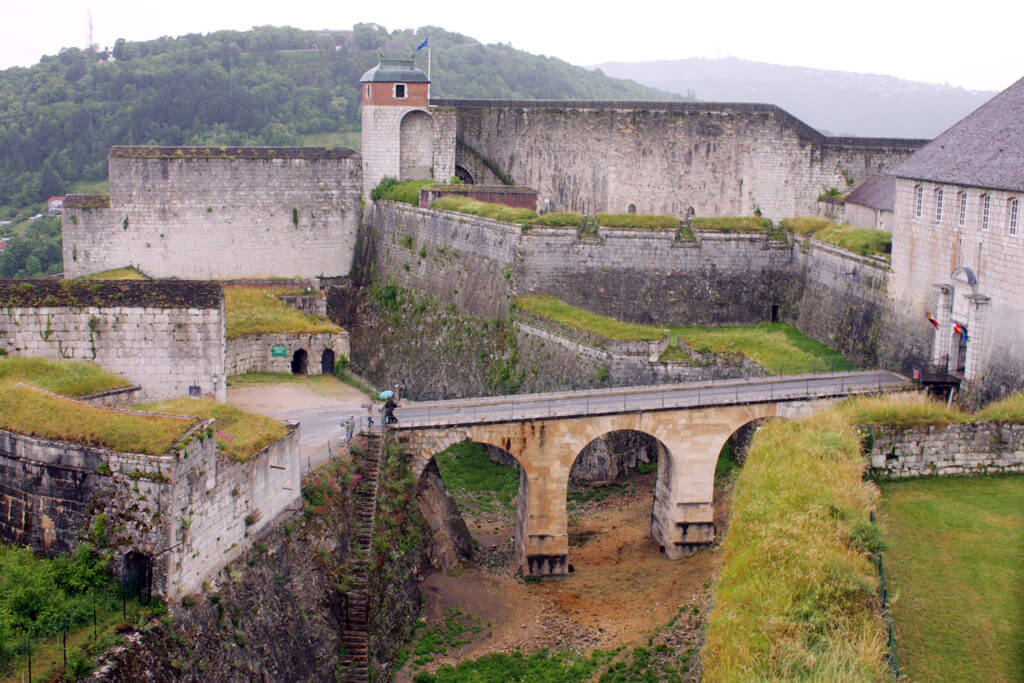
The Citadel of Besançon, designed in the 17th century by Vauban, is considered one of the most beautiful fortresses in France and one of Vauban’s masterpieces. The Citadel was listed as UNESCO World Heritage Site in 2008, together with nearby Fort Griffon.
The Citadel was built on Mount Saint-Etienne, one of the seven hills that protect Besançon, and it occupies 11 hectares. Overhanging more than 100 meters above the Old Town gives a spectacular overview of the surrounding area.
Today, the Citadel hosts three museums: the Museum of the Resistance and Deportation, a museum focusing on traditional life in Franche-Comté and the region’s archeological history, and a museum of natural history.
2. The Lake Region in the Jura
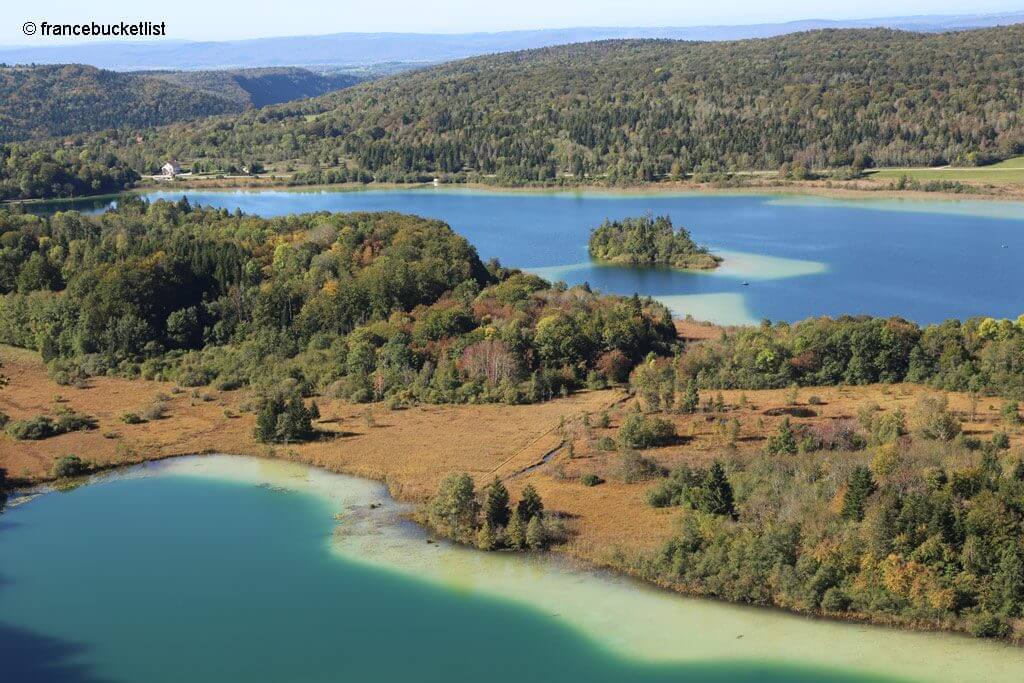
If you are wondering where to go in Bourgogne-Franche-Comté to be close to nature, the Jura department offers many possibilities. In the Jura, the Lake Region has a magnificent succession of waterfalls and lakes with wooded banks. There are also many belvederes (lookouts), perfect for admiring the lakes and getting some fresh air.
The Belvedere of 4 Lakes is perhaps the most beautiful, especially with the fall colors. It is located in the town of Le Frasnois, and offers a magnificent view of the lakes of Grand Maclu, Petit Maclu, Ilay, and Narlay. Nearby, there’s a succession of small waterfalls which make a beautiful 2-hour hike.
The Jura and its natural wonders are best explored by car. Have a look at this road trip through the Jura, one of the best road trips in France for nature lovers.
3. Small Villages of Burgundy
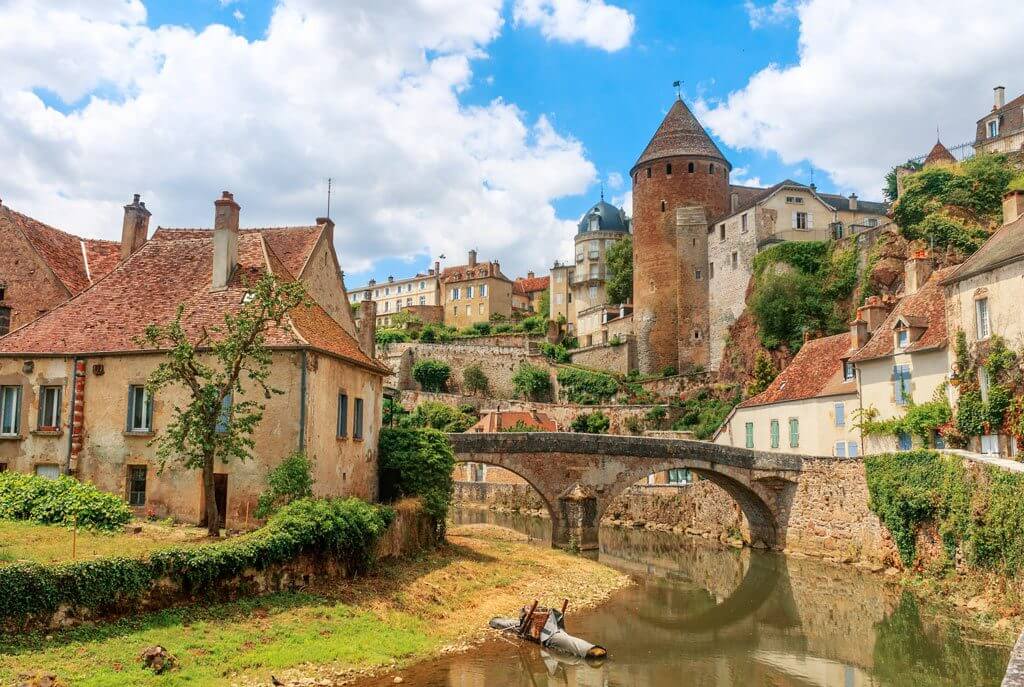
The historical region of Burgundy boasts an extraordinary historical heritage, with beautiful French castles, intriguing abbeys, and many pretty small towns and villages. Some of the most beautiful villages in Burgundy are also recognized as “most beautiful villages in France,” with names that you’ll recognize from the labels of your favorite Burgundy wines: Chablis, Meursault, Beaujolais, and Rully…
Hit the road and explore the most beautiful villages in Burgundy. Most of these Burgundian villages are located along 3 of the main Burgundy Wine Trails (Yonne, Grands Crus, Mâconnais /Beaujolais). Each village has its particular character and, of course, wines!
4. Burgundy Wine Trails
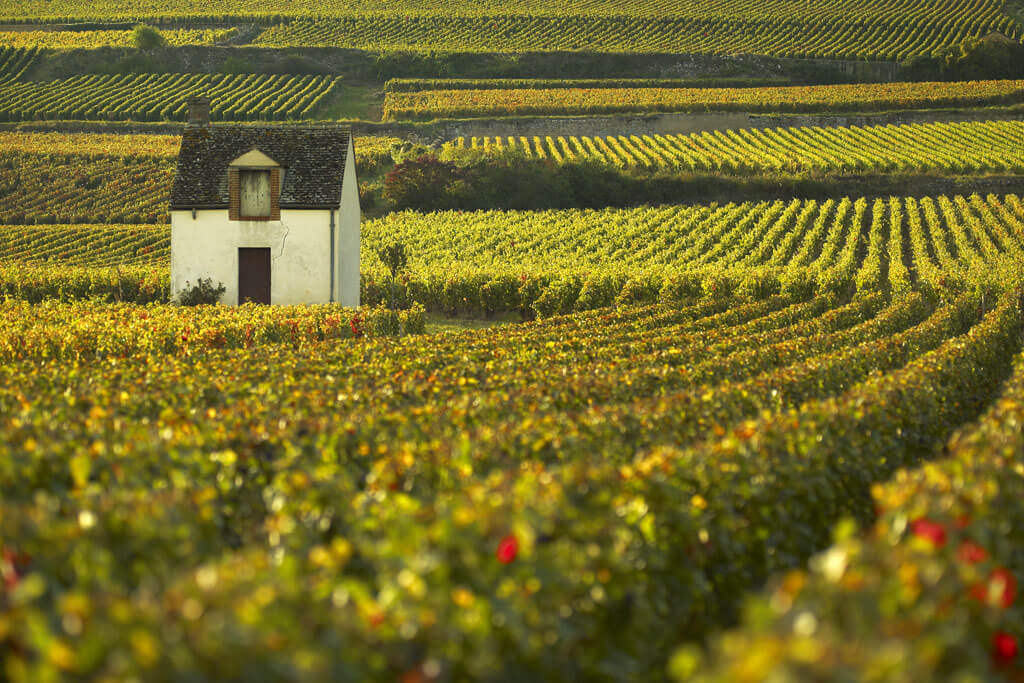
The wine of Burgundy is exceptionally complex, and therefore often very expensive. The Burgundy wine region(s) are found in the historical Bourgogne region. Like many of the other wine regions in France, Burgundy is comprised of several areas and towns.
The wine regions of Burgundy include locations such as Châblis, Côte de Nuits, Côte de Beaune, Côte Chalonnaise, Mâconnais, and Beaujolais.
The best way to learn more about the Burgundy wines is by following one of the Burgundy Wine Trails – Grands Crus, Grands Vins, Yonne, Mâcon. For a unique trip, combine wine tastings with sightseeing and stays in some of the best châtheau-hotels in Burgundy!
TIP: If you plan to bring a few bottles home (who could resist?!), make sure you pack your wine properly, so it arrives safely home!
6. The Burgundian Abbeys of Cluny, Cîteaux, and Fontenay

The Bourgogne region was once the cradle of the two great monastic movements of the Middle Ages: the Cluniac Order and the Cistercian Order, both followers of Saint Benoît’s rules – ora et lavora’ (pray and work). These two orders originated in the abbeys of Cluny and Cîteaux then spread out throughout Europe. We can find “abbey daughters” and “abbey sisters” of Cluny and Cîteaux in other countries like Belgium, Spain, Germany, or the United Kingdom.
These are the most interesting Burgundian abbeys that we suggest visiting, testaments to the medieval history of France:
- The Abbey of Cluny (Saône-et-Loire) is the abbey-founder of the Cluniac Order. This is the oldest abbey, built in 910 in the Romanesque style. Cluny was once the richest abbey in the Christian world which depended directly on the Vatican. Cluny’s wealth and power were broken during the French Revolution and in 1810 it was pulled down. But the sheer scale of the ruins gives a fine impression of what Cluny must have looked like at the height of its power.
- The Abbey of Notre Dame de Cîteaux (Côte d’Or) is the abbey-founder of the Cistercian Order. This abbey was founded in the 11th century and it was built in the Gothic style. Even if it was a model for numerous monasteries that were placed under its control, Cîteaux is less important than Cluny because it depended on the abbey of Notre-Dame de Molesme.
- The Abbey of Fontenay (Côte d’Or) was founded in 1118 under the Cistercian Order and it was built in the Romanesque style. Fontenay is an abbey-daughter of the Abbey of Clairvaux (Aube), which in turn is an abbey-daughter of Cîteaux. Despite being less important than Cîteaux, the Abbey of Fontenay is the best preserved and often used as a model to illustrate the typical plan of a Cistercian abbey.
7. Canals of Burgundy
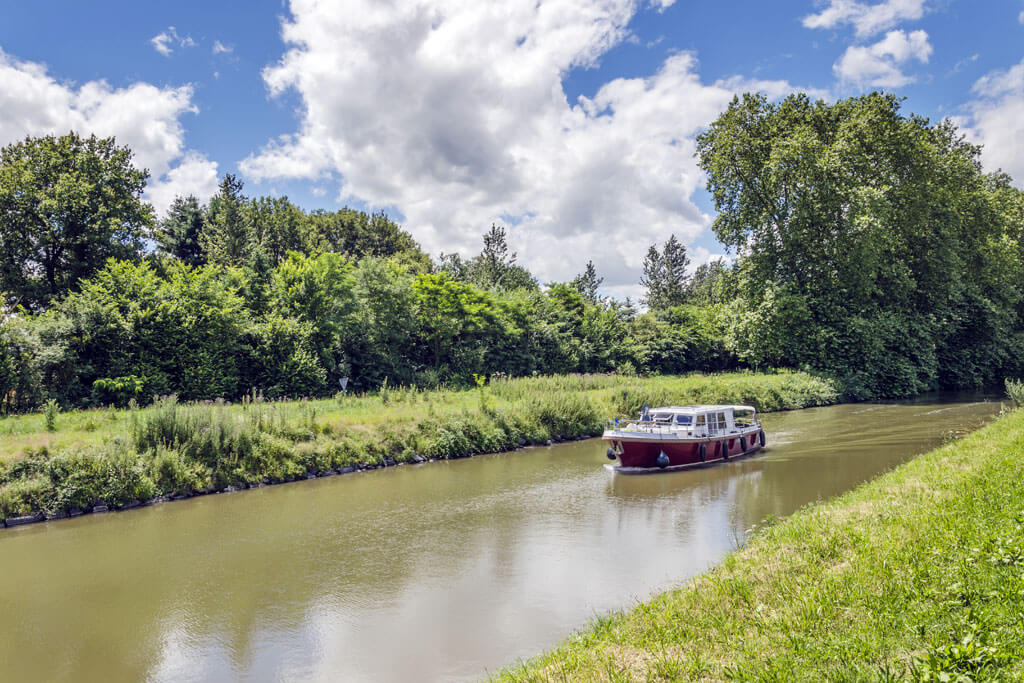
The Canals of Bourgogne (Nivernais, Centre, Bourgogne, and Seille) are 1,000 km of waterways built between the 17th and 19th centuries to transport all kinds of goods, from wood to ceramics.
The Canal du Nivernais was used to transport the wood from the Morvan forest to Paris while the Canal de Bourgogne was built to connect the Seine basin with the Rhône basin. This canal allows the connection between the English Channel and the Mediterranean Sea, hence its nickname of the ‘Deux-Mers canal.’
Today, these canals have lost their original purpose, but they are a great way to explore the Burgundian countryside and its villages by boat, on foot, or by bike at your own pace.
8. Château d’Oricourt
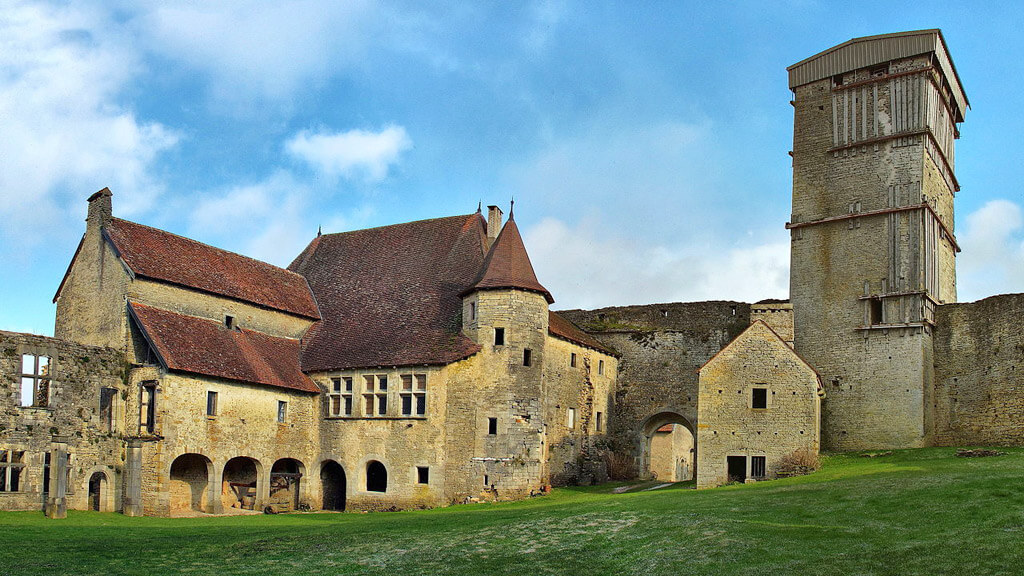
If you are interested in beautiful castles in France, don’t miss Château d’Oricourt during your visit to this region. Oricourt is the most imposing fortified castle in Franche-Comté and also the best preserved.
This 12th-century fortified castle was built on the edge of a plateau, facing the Lure plain. It has a double wall, with a first wall surrounding the lower courtyard (farmyard) and a second wall protecting the upper courtyard (residential courtyard). In the latter, it’s where the owners lived in a group of 12th and 15th-century buildings equipped with a well, cistern, and of course, extensive cellars.
Two imposing 25-meter square towers dominate the walls. The castle also has a remarkable dovecote built probably in the 15th century.
9. Notre Dame de Ronchamp
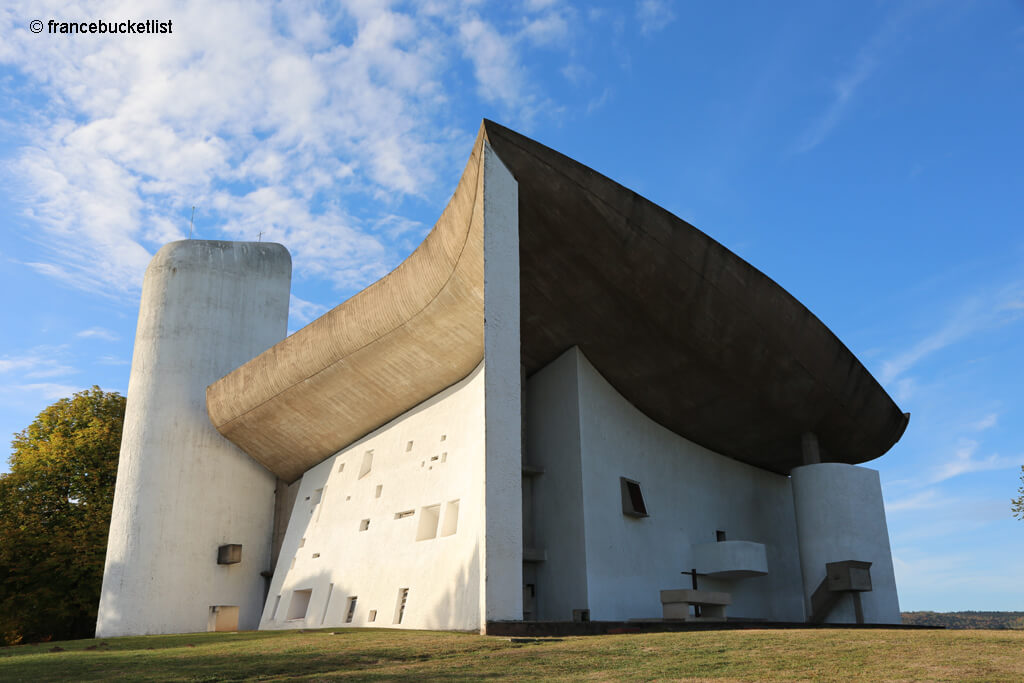
La Chapelle de Notre Dame du Haut, located in Ronchamp (Haute-Saône), is a masterpiece of the Swiss architect Le Corbusier. The building is listed as a historical monument and UNESCO World Heritage since 2016.
This small chapel with a picturesque setting on the top of a hill was built in 1955. There was a pilgrimage chapel dedicated to the Virgin Mary on this site, but it was destroyed during the Second World War.
Unlike most of Le Corbusier’s oeuvre, the chapel of Ronchamp responds to the specificities of the site and its cultural heritage as a place of worship. Le Corbusier also sensed a sacred relationship between the Jura Mountains and the hill, which dominates the landscape.
Ronchamp’s architectural ensemble has many similarities with the Acropolis of Athens. Visitors start the ascent from the bottom of the hill to architectural and landscape events along the way before finally terminating at the Sanctus Sanctorum itself – the chapel. From there, magnificent vistas spread out in all directions.
10. Les Hospices de Beaune
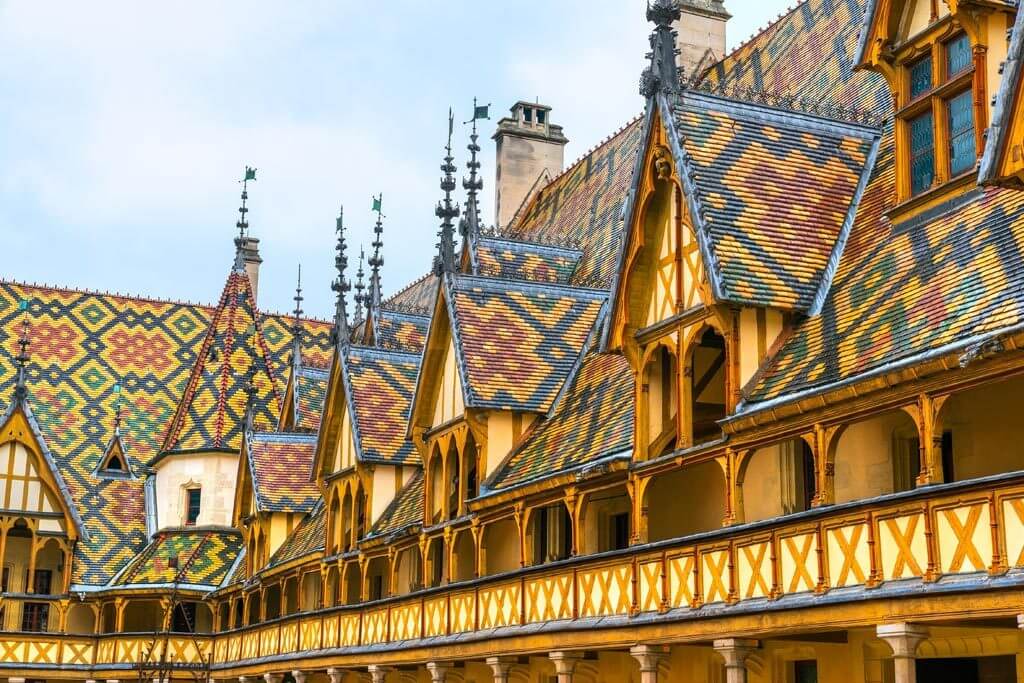
Beaune is one of the main Bourgogne-Franche-Comté destinations, mainly known for its wine and the Hospices de Beaune. Les Hospices de Beaune was built in the 15th century as a medieval hospital for the poor and remained in use until the 20th century.
Les Hospices is world-known for its splendid and remarkable traditional Burgundian architecture and its prestigious Burgundian wine estate, whose production is historically sold at auction to finance its operation.
Today, Les Hospices is a museum of the history of medicine. It also has a small exhibition area where you can admire the polyptych The Last Judgment by Rogier van der Weyden.
11. Vézelay
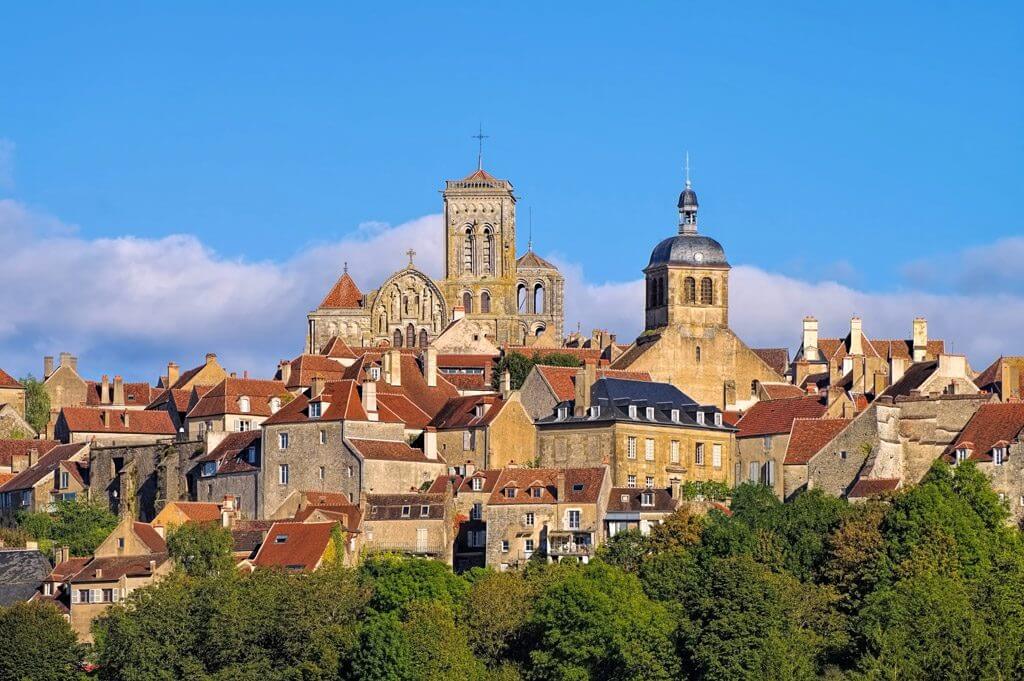
Vézelay (Yonne) is one of our favorite medieval towns in France. The town is a major site of Christendom and the starting point of one of France’s main pilgrimage routes to Santiago de Compostella. Both the town and its 11th-century Basilica of St Magdalene are listed as UNESCO World Heritage Site.
A visit to Vézelay is one of the best things to do in Bourgogne. Take the time to wander around Vézelay, with its lovely medieval houses, lofty towers, ramparts, and fortified gateways. The Romanesque Basilica of St Magdalene is Vézelay’s beating heart, and it hosts the relics of St. Mary Magdalene, which attires pilgrims from all over Europe since medieval times.
During the day, Vézelay is very crowded, and tourists can put you off. Try to spend a night in Vézelay (we recommend the oh-so-pretty boutique hotel Les Glycines) for a different experience: at sunset, Vézelay returns to itself – a tranquil Burgundian village beautifully lit up and with a dozen excellent restaurants.
12. Dijon, Burgundy’s Capital
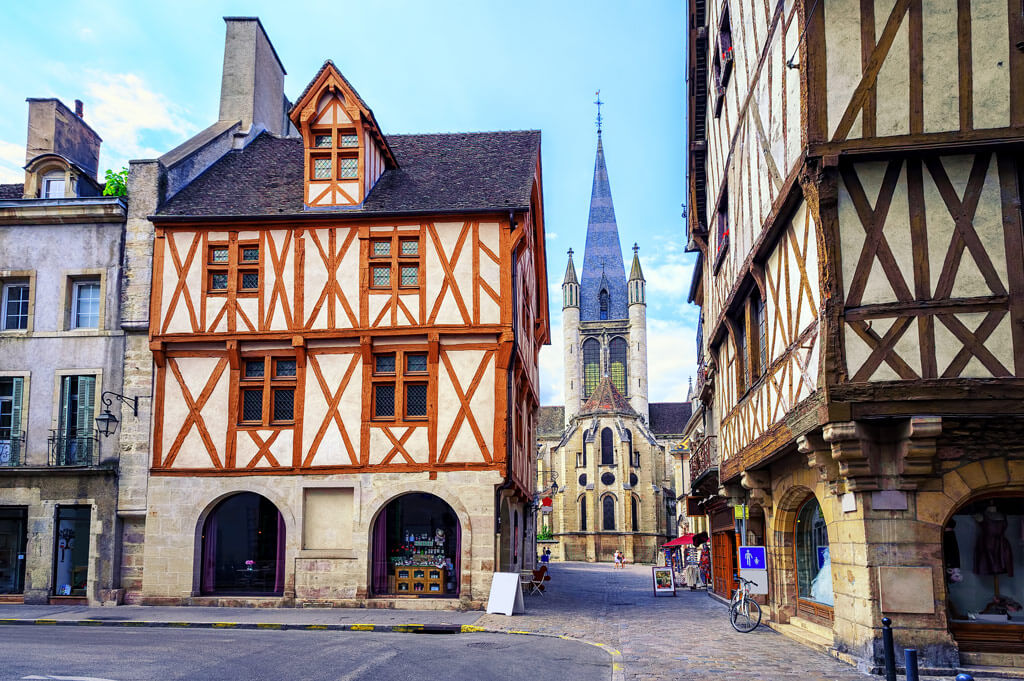
Dijon is the capital of the historical region of Burgundy, home to the famous Dukes of Burgundy. After the monks, the powerful Dukes of Burgundy dominated art and culture across Europe. With their help, the Burgundy region and its wines gained considerable economic and cultural standing.
Don’t miss the Palace of the Dukes in the heart of Dijon, it is very impressive! For the full list of the best things to do in the city, check out our quick guide to Dijon.
Dijon is one of the easiest day trips from Paris by train, so don’t miss the opportunity to visit Dijon if you have an extra day in the capital or for a weekend trip – Click here to book your stay in Dijon
And there you have it, a good list of what to see in Bourgogne-Franche-Comté. If you want to learn about other regions, head to this article on the Regions of France, where we have summarized the highlights of each region.

